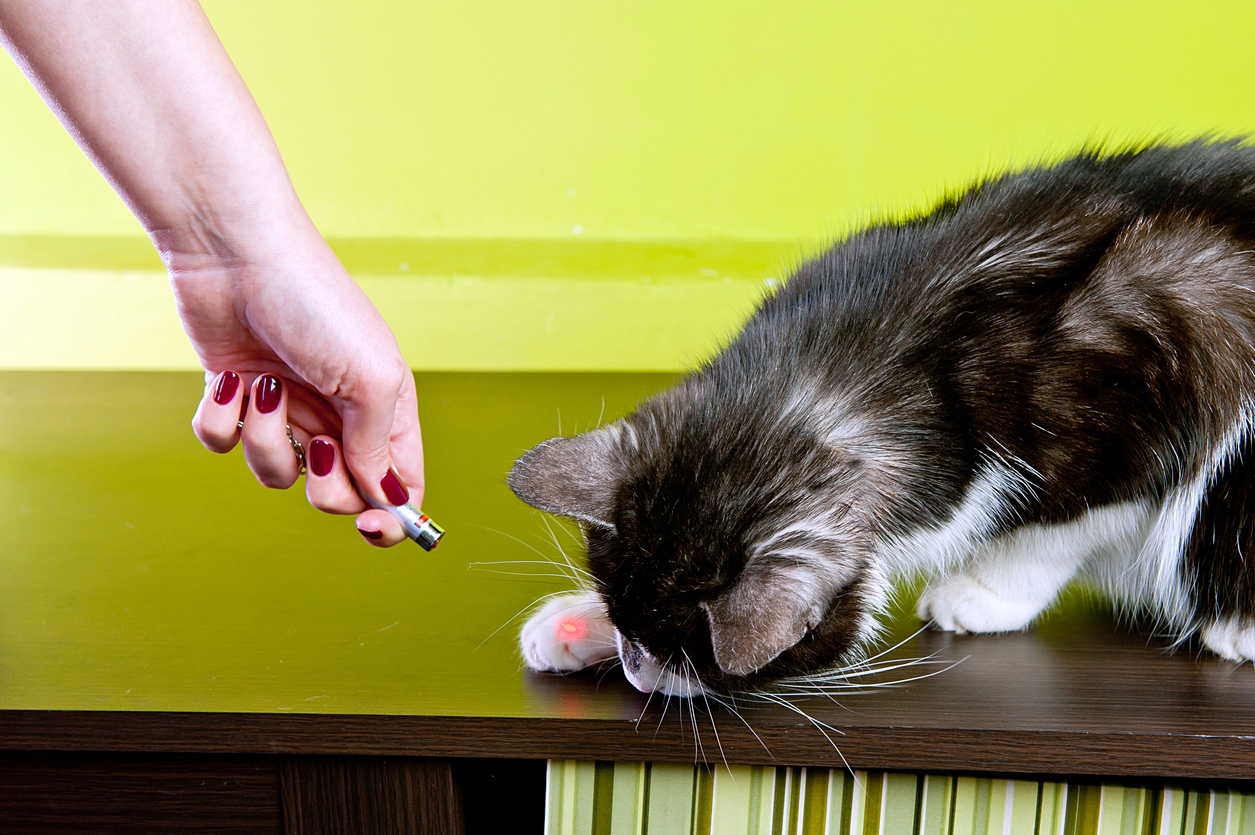Understanding Cat Play Behavior
Cats are natural hunters, exhibiting instinctual behaviors that make playtime essential for their physical and mental well-being. Engaging in playful activities allows cats to mimic hunting, providing exercise that helps maintain a healthy weight and reduces behavioral issues. Understanding the nuances of feline play is crucial when considering the use of toys, including laser pointers.
The Appeal of Laser Pointers
Laser pointers have become a popular choice for cat owners seeking to provide stimulating play experiences. The allure of the rapidly moving red dot captivates many cats, encouraging them to chase, pounce, and leap, mirroring their hunting instincts. However, the effectiveness of laser pointers in fulfilling a cat’s play needs is a topic of ongoing debate among veterinarians and feline behaviorists.
The Potential Risks of Laser Pointer Play
While laser pointers can offer instant gratification for both cats and their owners, there are notable concerns associated with their use.
Frustration and Anxiety
One significant issue with laser pointers is the potential for frustration. Unlike physical toys that provide a tangible reward upon capture, the elusive nature of the laser dot can lead to feelings of inadequacy in cats. After an energetic chase, a cat may be left without the satisfaction of a catch, which can contribute to anxiety and behavioral problems over time.
Overstimulation and Aggression
Cats can become overstimulated during play, leading to aggressive behavior. The constant stimulation of chasing a laser pointer may trigger a cat’s predatory instincts to the point where they begin to exhibit aggression toward their owners or other pets. It is crucial to monitor a cat’s behavior during laser play to avoid crossing the line from playful to aggressive.
Recommendations for Safe Laser Pointer Use
To mitigate the risks associated with laser pointers, consider the following guidelines for safe play:
Balance with Physical Toys
Complement laser play with physical toys that allow cats to engage their hunting instincts more completely. Providing a variety of toys—such as feather wands, balls, and interactive puzzle feeders—ensures that cats can both chase and catch, fulfilling their need for satisfaction.
End with a Catch
Always conclude a laser pointer session by allowing your cat to catch a tangible object, such as a toy mouse or a treat. This practice helps bridge the gap between the frustrating chase and the reward, giving your cat a sense of accomplishment.
Monitor Playtime Duration
Limit laser pointer play sessions to a reasonable duration—no more than 10-15 minutes—to prevent overstimulation. Frequent, shorter sessions can keep cats engaged while reducing the risk of frustration and aggression.
Conclusion: Laser Pointers in Moderation
In conclusion, while laser pointers can provide fun and engaging playtime for cats, they come with inherent risks that should not be ignored. By balancing laser play with other types of interactive toys and ensuring that every session concludes with a physical catch, cat owners can promote healthier play behavior and reduce the potential for frustration or aggression. Understanding the unique needs of our feline companions is essential for their overall well-being, ensuring they remain happy, healthy, and engaged.
By following these recommendations, we can maximise the benefits of laser pointer play while minimizing potential drawbacks, leading to a healthier, happier feline friend.
Yours in Paws,
The PawPaw Team

